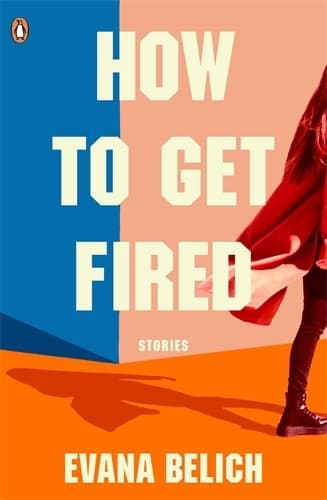Review: How To Get Fired
Reviewed by Ruth Spencer
There’s an unspoken sense of shame around the end of a job. The unacknowledged failings of a manager hang in the air; there’s guilt over abandoned colleagues, the ignominy of burnout, the pain of redundancy, the fear of financial insecurity, the anxious hope for better things. Evana Belich’s collection of stories gives a voice to what is usually quietly but deeply felt: the clumsily transcendent process of moving on.
How To Get Fired weaves the stories of many characters together in intricate ways. They’re not necessarily stories of firings, but rather tales of endings. Some endings are escapes and some are, of course, traps. The first, Motivational Story, sees underperforming Retail Sales Display (RDS) rep Mel unable to join her colleagues in their enthusiasm for cringey work jargon, sales targets and KPIs. She doesn’t want to lose her job, but she can’t get past the meaninglessness of it. Toby can’t fathom Mel’s desire for more than the world of Pacific Wave’s plastic shelving division. A zealot of his industry, he's full of statistics about the ‘eye-to-product viewing corridor’ and ‘Catch value,’ the buzzwords and blather of the plastic shelving industry. Able to locate his entire purpose and identity in his job, he can’t meet Mel in her crisis of meaning – but which is the more tragic situation?
Some do make good their escape; in Parked Up Owen does his absolute best to step into the freedom he’s envisaged by taking on a roving life. Redundancy gave him enough to put a mattress in a van and he’s parked on a wild, wintry Otago beach, writing blog reviews of toilet blocks. He gives it all he has but what it gives him back is limited, as he begins to acknowledge: ‘He’s exactly the same soft thing he’s always been, trapped or not, free or not. The sea doesn’t make any difference to any of that.’ Which is the trouble with escaping any situation: you take yourself along.
We see Owen later in the periphery of another story; it’s a relief to revisit some of the characters we come to care about, or even the ones we dislike. It’s good to see Kyle again in Connie’s story, not for Kyle’s sake but for the update on his progress. It would have been good to see the intriguing Connie again too, and Chess, whose story is heartbreaking in a small, mundane and absolute way. Aunty Lou, the hopeful Robbie; they’re characters that stay with you long afterwards. That’s the tantalising aspect of Belich’s stories; engaging with these people for a short moment in their lives is a series of loving and letting go. Endings already begun.
How To Get Fired is beautifully written, full of astute observation, delicious turns of phrase and Belich’s piercing eye for detail. It’s in turns funny and bleak, wistful with a sharp edge. It’s deeply perceptive but gentle towards the failings of its inhabitants. Belich has created something very real, something that expresses the battle between deepest yearnings of ordinary souls and the callous power of work and social expectations. She captures how tethered we are to the lives we are conditioned to; with kindness she reveals the flaws that doom us. The stories uncover the inhumanity of power and conformity, the trap of the mapped path, the sometimes salvationary apocalypse of having a breakdown.
Being fired, which is to say having things end without your wishes being consulted, is an occupational hazard of being human. How To Get Fired celebrates the tenacious survival of hope for new beginnings.
Reviewed by Ruth Spencer
